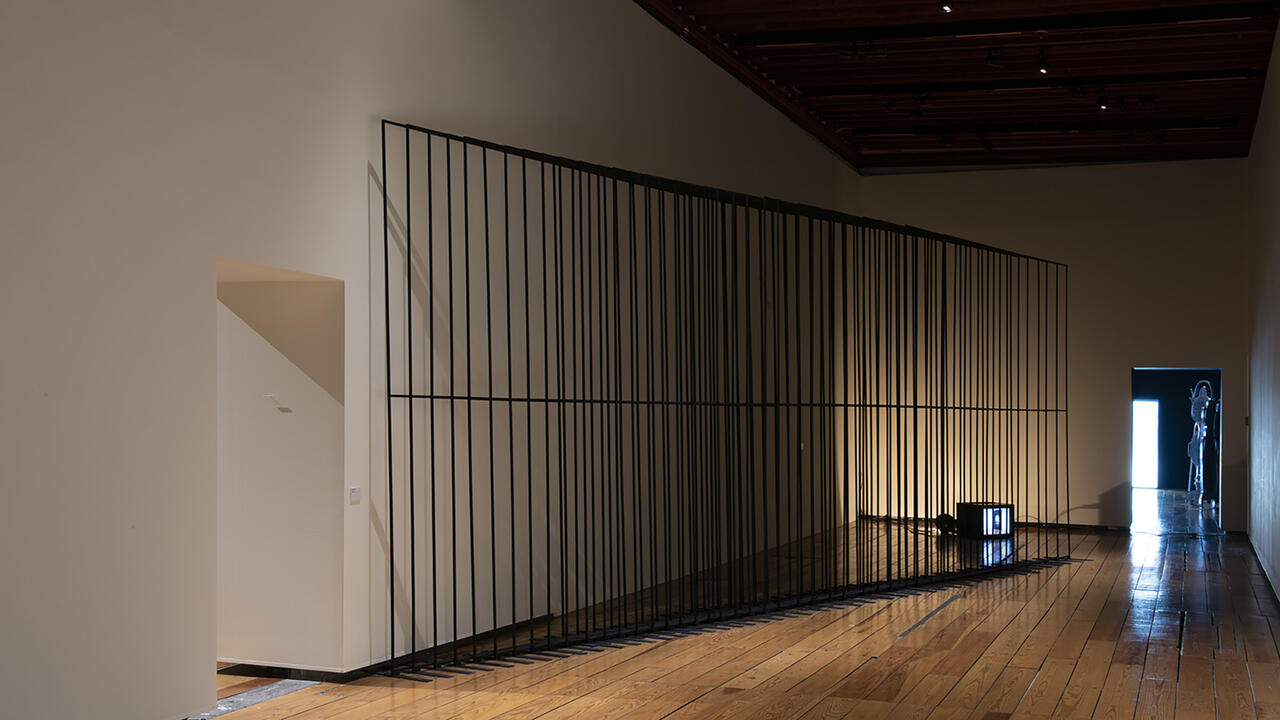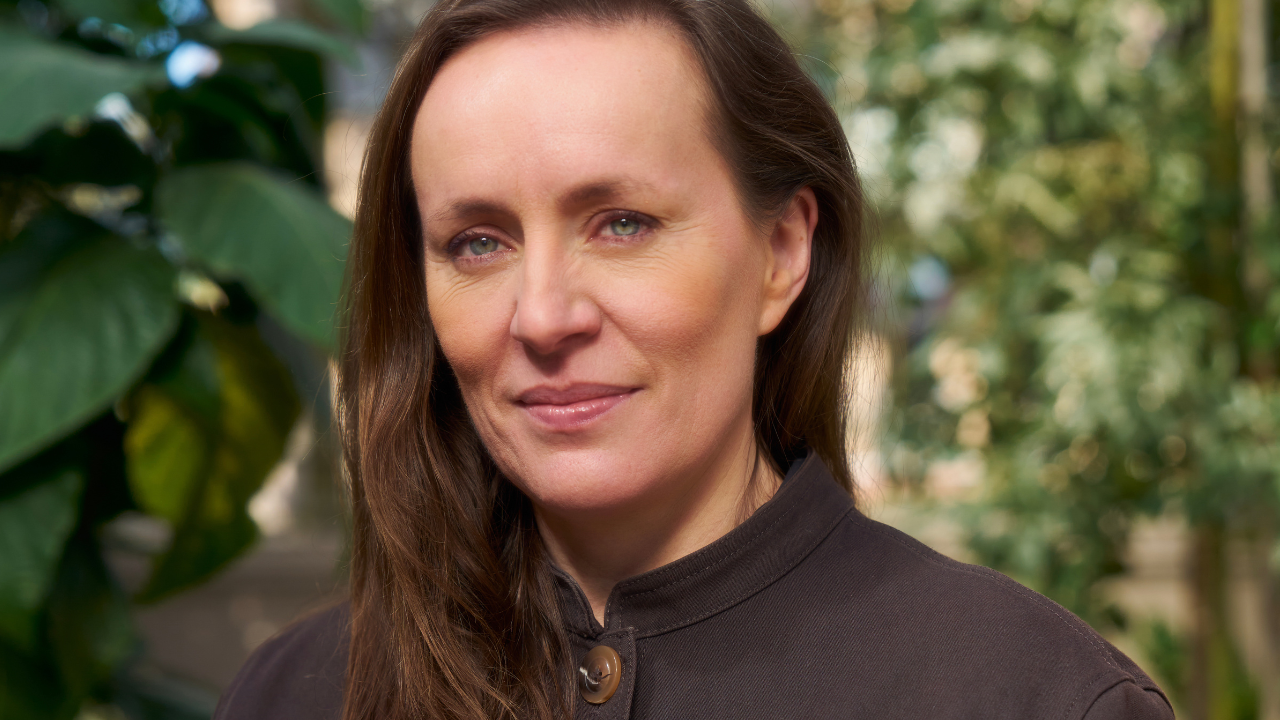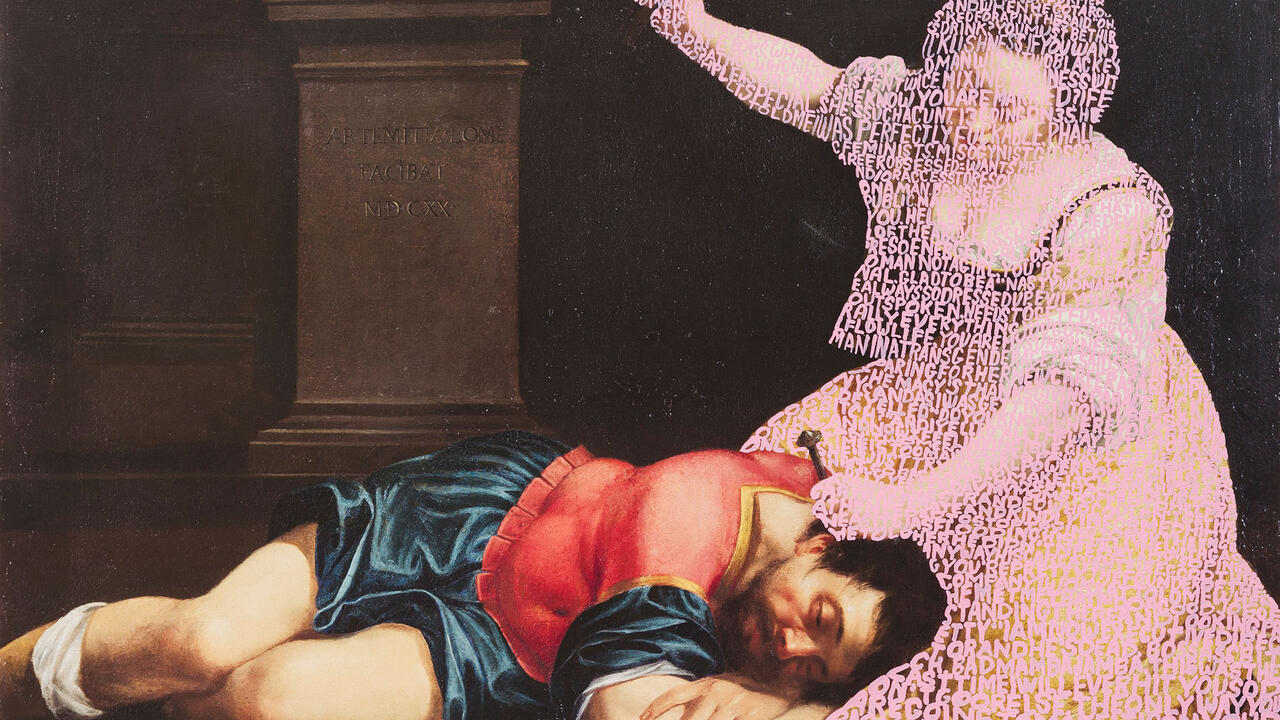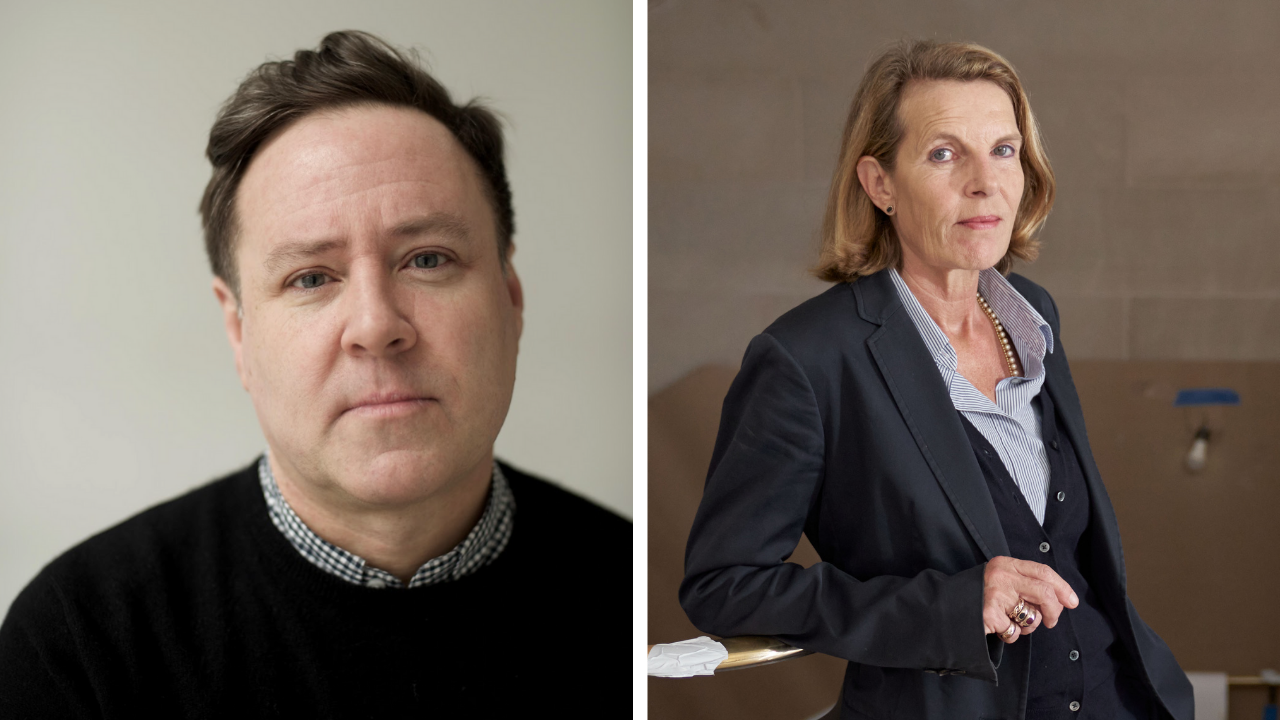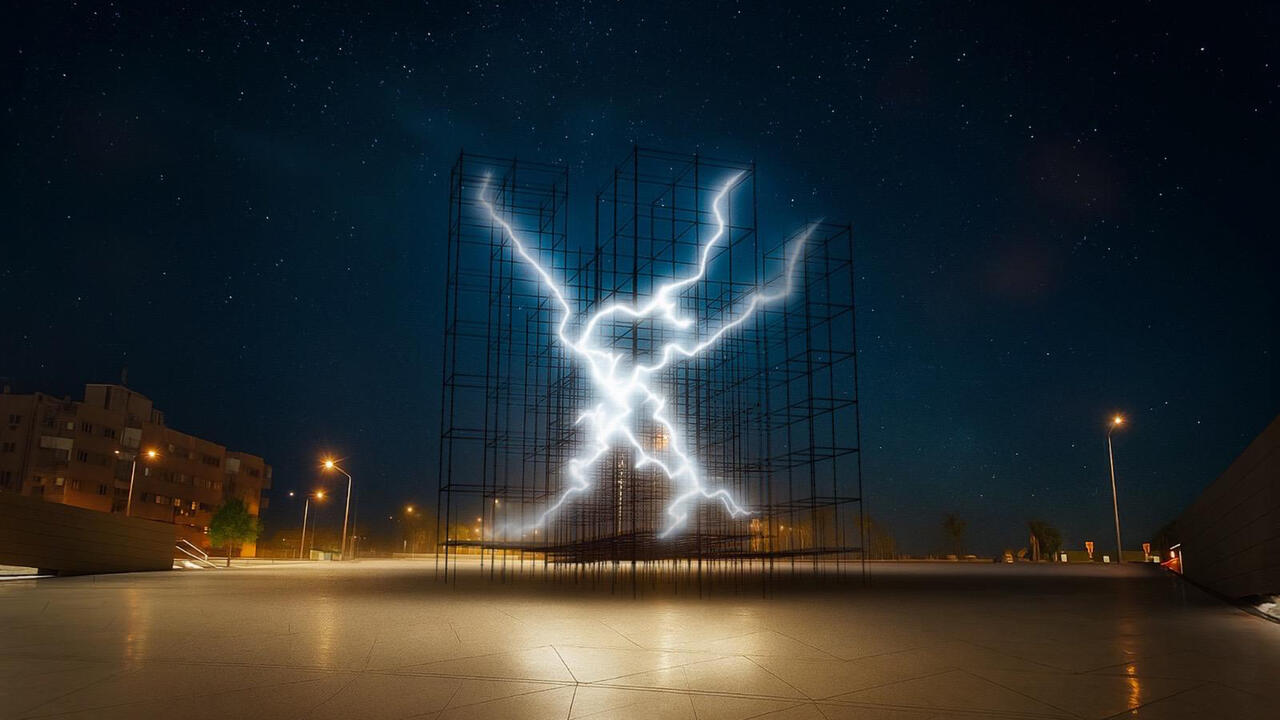A Nod's as Good as a Wink
In conversation with Sarah Lucas
In conversation with Sarah Lucas

Carl Freedman: What do you want from art? Why make it?
Sarah Lucas: I don't know what else I'd do. Sometimes I think that it's exactly what I want to be doing, that I've got something to express and I'm hitting the nail on the head. And other times I'm asking myself the same question. I want to be giving some kind of form to my ideas, I suppose I do think that I've got something to say, in a way.
Your work relates directly to life and ideas about life.
Yes, I think it's both what I like and what I'm like. It is based on my life, not about my childhood or anything, but what I'm like is so much to do with how I grew up and where. And, if you like, that is my point of view, and I try and make things according to my own point of view. Maybe it's something that I might find funny, the tone of someone's voice. It stems from that.
How much is the way you work integrated into a way of life?
I don't make things which are really preciously made. I don't have the patience to be whittling away at something for ever. I make things how I am, in the way I'd quite naturally do something. Because I've been doing it for some time now, I feel as if the way I make things really is at my fingertips. I always admired Jimi Hendrix for that, because I thought he had it at his fingertips, right at his fingertips. He played the guitar like it was part of him, straight out of his heart, not mediated. And that's how I want to make art.
Is there a difference between the Sarah Lucas represented in the work and the Sarah Lucas who makes the work? Is it a pose?
They're not autobiographical really. They're things that are played upon me which I turn around and send out again. Once you make an object then it has its own life. You could think that the person in the self-portraits is who I really am, but I don't think they're really like me. They're less like me than a sculpture. I don't stand around the whole time with my hand on my chin looking tough and surly. So I don't think it's a pose. Well it is a pose but it's the kind of pose that I can actually make. So in that sense they're sincere as well. And I use myself in pictures because I'm a good candidate for what I'm after, and also it does seem to add something to it because it's me.
Are you creating an idealised image of yourself, how you'd really like to be?
It is a positive view of myself, and in that way it does become another kind of fiction.
Through working directly with yourself and your life, do you actually transform yourself in the process?
Yes, it does feed back. It's like the way I now have this reputation. People come up to me all the time, who I've never met before, and expect me to be really tough and they're quite surprised if I'm nice and don't spit in their face or something. And funnily enough that works out very well for me. It saves me a lot of bother, that people are already wary of me. It reflects back on how my life shapes up in a really handy way.
How much do you analyse what else goes on in art and appropriate things for yourself?
I don't see myself as appropriating much. In a way I'll use anything I can and I think you justify your use of something by what you do with it. I think the really crucial thing is making a climate of ideas for your own work and I've managed to establish some kind of context for myself and what I'm doing. And that means that when I do something it's less empty than if I hadn't established that context. But I think that's important, in one way or another for any artist to do. They are both in tandem, what you do and how you establish a context - and the best artists do all of that quite well.
There's quite a lot of aggression in some of the things you do, a real 'fuck off' attitude. What or who is that actually directed towards?
I don't know if the work is as 'fuck off' as other people seem to take it.
A pair of your boots with razor blades in the toecaps is a pretty aggressive thing to make.
Well, yes, a couple of things that I've made have come about in a fit of anger. I don't know... I think it's more reflected on myself, or at things in general rather than anything specific. Maybe it's just... trying not to feel powerless, and one thing about feeling powerless is that what you're up against is so faceless, it's like banging your head against an invisible wall. That's what it's directed towards I suppose - the invisible wall.
Is that feeling of powerless gender-based, the subordinate woman?
No, I don't think so. Everyone's in that position in a way. But I also think you can't escape your gender or anything else about who you are, so I don't think gender is irrelevant. You use whatever you happened to be lumbered with in any particular instance positively, or you can let it get on top of you, and I mobilise what I've got and what I can use in a positive way. Feminism helped me mobilise myself for a while and I read a lot of feminist books and stuff and it gave me a lot of ammunition. And though I've resisted becoming entrenched in feminism it's definitely helped me. I think women are having a really good moment, and it's definitely a good time for women artists. I think the way women have been able to use feminism as a subject, or women's predicament as a subject, is fantastic in its way.
But you don't take on a crusading role.
I don't know why, but I just feel a bit reluctant to get entrenched in that. I suppose in the end, feminism is all about women finding some kind of liberation just to be - just to be women, just to be people. And I've decided that I don't want to be the individual who is harping on continually about a particular issue. I don't want to have my soapbox with me at all times and be very humourlessly trying to ram certain information down people's throats. I know someone's got to do that job. I just don't want it to be me.
Does the bad girl, angry young woman come from having a working-class background, and being in the art world, which is essentially middle-class, and rubbing up against a different set of values?
Probably. But that's a kind of paradox. Because if I'd lived out the life that seemed to be on the cards, I probably wouldn't ever have gotten interested in feminism. It's through becoming more middle-class that I got interested in that stuff. But yes, there are a lot of things rubbing each other up... both the wrong way and the right way.
How do the Sunday Sport posters fit into all that?
I started working with the Sunday Sport for one really specific reason, which was that I had absolutely no money. And I thought, what I need is to make working practical, and it was 25 pence and so I just started buying it every week and making work out of it. It was cheap and I could start getting on with it. And I did choose it because it was potent, because it bothered me a bit. It was ages before I decided to do those big posters, I mean I'd done them before I'd reconciled myself to having done them. Initially I had all those feminist qualms about whether I would just be propagating that kind of thing. And then I started to quite like those images, having an affection for the characters in the different posters. They're kind of redeeming themselves at the same time as exposing themselves. Like the fat woman. It's fantastic that a fat woman gets up in a newspaper with all her clothes off. But I also thought of them as being a backdrop to the rest of my work. It comes back to this idea of creating a context. And because they are so noticeable people always pick on them. Like at the show at Saatchi's everyone talked about those and not really about anything else, which to me is the opposite of how I think of my work, to me they are a kind of background to the other work. I had this idea that you've got to put a certain amount of stuff in, it's no good trying to refine yourself to the point where you're leaving out everything to try and create an essence of a perfect object. The only way anyone would know how perfect that object is, is because you've put the background in. I also saw the Sport posters as being a kind of history painting. They exist, they're really common to everybody to some extent or other. Everyone, even if they reject the ideas totally, is embroiled in this kind of sexual state of affairs. Nobody's indifferent to this kind of imagery. There's a lot at stake.
Besides the aggression there's also a lot of humour in the things you do, which acts as a counterweight and provides a balance.
Yeah, well I like to have a laugh.
It's a particular British humour in the tradition of Hancock, Monty Python, Peter Sellers...
Yeah, I'm completely into that, because that's what I can really understand. It's clear to me and it's also very rich. Having been here all my life, that's what I understand. And that's the one thing that anyone's got - what they know themselves. Look at James Joyce. He didn't get where he was by trying to be international.
You approach sex in a humorous way a lot of the time. Your dick pieces, the visual puns with vegetables.
Yeah, that's the way I think most people think a lot of the time. If I go down the Chapel Market one day and buy a cucumber, the guy I'm buying it off winks when I'm buying it. Life's imbued with this continual innuendo, especially here. If you're walking along with this bloody great marrow, especially in the summer, people will be winking left right and centre, nudging the person they're with.
Is this a way to reduce sex, to normalise it, to turn it into a joke?
Well it's not just 'Carry On'. What stops it from being slapstick is that I'm actually making things and you have to consider formally what kind of an object it is, to which other people don't pay a lot of attention on the whole. I pay attention to what kind of an object it is, and if it works as an object. All the usual concerns, which I do bend a lot. But I stick to certain rules, a sense of truth to materials, that a sculpture should be whole. If you look at Two Fried Eggs and a Kebab I think it's a perfect example of really whole sculpture, it's complete. My approach is a defence mechanism as well, I suppose. If I make Two Fried Eggs and a Kebab it's because I live with remarks like that all my life. And I think, well yeah, I can make that same kind of remark just like you can, and I make it look fucking good into the bargain.
You seem to have a fascination with dicks, which is only normal I guess.
That fascination with dicks is a formal one as well. It's interesting in terms of the current debate about sexuality, the whole intellectual presence and absence thing. A dick is present, and masculinity is defined in terms of being present, being an artist is a macho activity because it deals entirely with what is present. And funnily enough, as it turns out, a dick with two balls is a really convenient object. You can make it and it's already whole. It can already stand up and do all those things that you'd expect any sculpture to do. In that way it's really handy, I mean I could start thinking about making vulvas but then I'd have to start thinking about where the edges are going to be.
What kind of an audience do you want?
My idea of an audience is as broad as possible, as broad as the public. I believe the public does like art, and their stance against it is a part of how they like it - they enjoy having a go at it. And I make my work with that in mind. It plays on that - that people are not going to like it, or they're going to laugh, or they're going to think it's a load of bollocks.
There seems to be a certain degree of madness in making art. Did you begin to wonder if you were not a little insane frying eggs every morning for Two Fried Eggs and a Kebab?
Not really. I thought it was pretty funny really. I treated it a bit like a performance. A heck of a lot of people came and stood looking in the window and I'd tell them to come in, but they'd just scuttle off. I don't know... it was good frying the eggs, I felt a bit like a dirty old man.










